Scroll to:
Effect of explosive detonation velocity on the degree of rock pre-fracturing during blasting
https://doi.org/10.17073/2500-0632-2023-11-177
Abstract
At many quarries for the extraction of building stone there is a problem of increased output of fines after all stages of crushing and grinding, which leads to a decrease in the economic performance of mining enterprises. The fine fraction is formed by the crushing / grinding of prefractured rock mass. Reducing the intensity and size of the prefracture zones will lead to a solution to the problem at hand. To determine the effect of explosive detonation properties on the degree of structural weakening of a rock mass, studies were conducted to measure the detonation velocity, stresses generated by a blast in the rock mass, as well as laboratory studies of microfracturing by X-ray computer microtomography. The size of the prefracture zones increases from 33 to 77 charge radii with increasing the detonation velocity from 2 to 5.2 km/s. The dependence of the number of microdefects (microfractures) generated by a blast on the velocity of explosive detonation takes the form of an exponent for the near zone and is linear for the distances far from the blast. According to the data of the experiments conducted at short distances (10R), the density of induced microfracturing N is within ≈5 thousand pcs/cm3, and with increasing the detonation velocity it increases to ≈13.8 thousand pcs/cm3. At medium (40R) and long (70R) distances, N increases from ≈750 to ≈2,400 pcs/cm3 and from 0 to ≈200 pcs/cm3, respectively. Using explosives with a reduced detonation velocity allows reducing the “surplus” impact on a rock mass and thus reducing the intensity of prefracture in the zone of controlled crushing during a blast. The study allowed obtaining quantitative parameters of the intensity and size of the prefracture zones, which compose the supplement to findings of historical studies on qualitative determination of prefracture.
Keywords
For citations:
Khokhlov S.V., Vinogradov Yu.I., Makkoev V.A., Abiyev Z.A. Effect of explosive detonation velocity on the degree of rock pre-fracturing during blasting. Mining Science and Technology (Russia). 2024;9(2):85-96. https://doi.org/10.17073/2500-0632-2023-11-177
Effect of explosive detonation velocity on the degree of rock pre-fracturing during blasting
Introduction
The non-metallic materials production segment in the Russian market is an integral part of the mining industry. Crushed stone is the most widely used product of mining and processing of non-metallic building materials, which is used for road construction, production of reinforced concrete, ready-mix concrete, laying and repair of railroad tracks, etc.
In recent years, the volume of crushed stone production reached 22 million m3/year [1, 2]. The economic performance of mining enterprises for the production of crushed stone products directly depends on the volume of quality fractions of crushed stone produced, which is related to the issue of the product quality [3–5].
The problem of increased yield of substandard fines when crushing blasted rock mass exists in crushed stone production at present time [6]. Up to 30% of the final product volume is lost as fines that leads to a decrease in the volume of quality fractions and unsustainable environmental management [7], which is reflected in the growth of areas of fines dumps [8–10].
When material is crushed in crushers, fines is formed during processing of rock mass prefractured by blast [11], since structurally weakened fragments with increased density of microfractures have reduced strength characteristics and tend to crumble into small pieces under relatively small impacts [12, 13].
Changing the detonation characteristics of explosives has a direct effect on the size of the zones and the degree of prefracture. The results of historical tests [14] show that increasing velocity of explosive detonation results in increasing the prefracture zone, in which elastic and strength characteristics of rock mass properties change with distance from an explosive charge.
Assuming that prefracture is the accumulation of microdefects in a medium, applying the approach to the determination of fracturing and microfracturing based on the multistage fracturing model [15] leads to the need to study the quantitative parameters of microfracturing as a function of detonation velocity.
The purpose of the work is to determine the dependence of the quantitative index of microfracture density on the velocity of detonation of an explosive, which affects the magnitude of stresses occurring in a rock during a blast. An appropriate methodology for establishing this dependence is proposed. The study is necessary to quantify the prefracture parameters and the size of a structural weakening zone.
1. Theoretical treatment
During blast crushing of hard rocks, a zone of wave prefracture is formed [16], within which induced microfracturing increases. The accumulation of microdefects in the volume of both the rock mass and a separately considered piece of the rock mass after the blast leads to structural weakening of the rock and decreasing its strength [11, 12]. A prefracture zone is predominantly developed in hard rocks that adversely affects the economic performance of building stone mining.
Considering the structural weakening of the strength of a rock mass or individual pieces of a rock mass at different distances from a blast, it is necessary to use the multistage model of solid body fracture as a basic model of rock fracture. In accordance with this model, each newly formed defect in a rock mass is predetermined by the presence of smaller defects. In accordance with this model, each newly formed defect in a rock mass is predetermined by the presence of smaller defects. At the first stage, a process of random quasi-uniform accumulation of first-order defects occurs. It is worth noting that a rock mass, regardless of its structural characteristics, is always an anisotropic medium [17]. The inhomogeneity of a medium, as well as the local differences in the internal loads in a rock mass, leads to the formation of areas of high concentration of first-order defects at the second stage. At the final phase of the stage, when the concentration of first-order defects exceeds a critical threshold level, fusion of the defects (fractures) occurs, which leads to the formation of second-order defects [15]. Accumulation of defects occurs until the moment of rupture – separation of the fragment under study into two or more pieces.
The structural weakening zone is limited to the region of blast-induced microfractures [18]. And the induction of these microfractures (wave prefracture) depends on the magnitude of stresses occurring in a rock [19].
Rock rupture mainly depends on the energy of stress waves [20] propagating in a medium [21, 22]. One of the most important wave characteristics affecting the magnitude of stress is a blast pulse, which predetermines all subsequent stages of the blast development: rock deformation, rock crushing, and rock mass movement. The influence of a blast pulse on the character of rupture is considered in [23, 24].
The findings of historical studies with the blast of the reference explosive Ammonite No. 6ZhV [25] showed that the dependence of the velocity of a rock mass displacement at different distances during the blast on the relative distance has the form of a power function (Fig. 1). It should be noted that the studies covered the conditions of Olenegorsk ferruginous quartzite open pit.
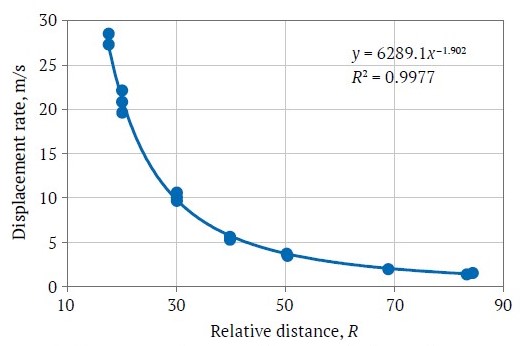
Fig. 1. Graph of rock mass displacement velocity as a function of relative distance [compiled by the authors]
The concept of prefracture refers not only to the part of a rock mass behind the controlled crushing zone, but also to individual rock fragments in the crushing zone after a blast. This is important because these pieces have blast-induced microfracturing, which contributes to structural weakening of the strength of these pieces, and as a result, the yield of substandard fractions when crushing the blasted rock mass into crushed stone increases.
The determination of a rock mass structural weakening magnitude dependence on the stresses caused by a blast will make it possible to determine the size of the prefracture zone and the intensity of fracturing.
2. Research techniques
In determining the parameters of rock prefracture, the method of full-scale experiment was used to determine the stresses generated in a rock during a blast and to measure the detonation velocity of explosives. A laboratory study method was used to investigate the nature of microfracture formation. The methods of statistical data processing and analysis were applied to determine the size of the prefracture zones, as well as for data processing and interpretation [26] and comparison of the study results.
2.1. Stress measurement
The measurement of stresses in a rock, arising during a blast at different distances from the charge, in order to obtain the information about the nature of wave processes during blasting was carried out by an indirect method, by means of performing experimental blasts with recording acceleration of displacement of rock mass particles by measuring transducers. The measurements of accelerations were carried out according to the known method [27–29] with blasting of Ammonite No. 6ZhV, Granulite R, and Emulsolite A-20 explosive charges with recording of readings of rock mass particle displacement accelerations at three relative distances from the blast – 10, 40, and 70 radii of the charge.
The study was carried out at a limestone quarry. A schematic of the hole locations for each blast is shown in Fig. 2. Orange indicates a blast hole, blue indicates measurement holes for sensor placement. The given arrangement of holes ensures the accuracy of measurements due to the absence of additional media interfaces between a blast hole and each of the sensors.
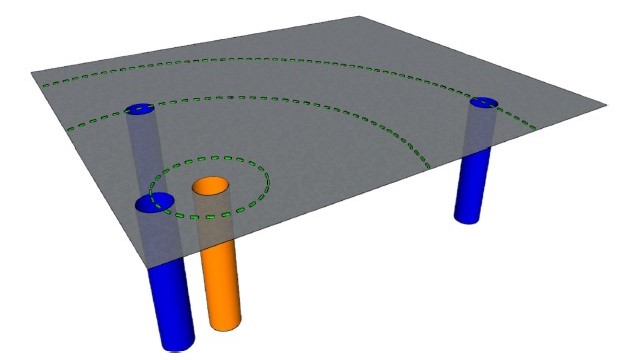
Fig. 2. Hole location scheme [compiled by the authors]
Each accelerometer was fixed at the level of the center of an explosive charge. The sensors were fixed in the holes with alabaster with drilling fines added to create an environment as close as possible to the rock mass.
The conversion of accelerations to stresses was accomplished by integrating acceleration values into velocity values. A velocity is taken into account when calculating sound pressure or stress. The sound pressure is represented as the difference between the instantaneous pressure in the wave propagation path and the static pressure proper. The stress wave at each point in the wave field propagates similarly to the particles displacement velocity at the same point. The coupling parameter between pressure and displacement velocity is wave impedance of the medium or its acoustic impedance [30]. The above parameters are related to each other by a relationship:
where P – sound pressure, Pa (MPa); U – сparticle displacement velocity, m / s; ρC – acoustic impedance.
The relationship between the stresses occurring in a rock and the displacement velocity under the influence of a seismic explosion wave is established using the method of conversion of the mass velocity data into the parameters of the resulting stresses through the calculation of the stress in the rock using the following formula:
where σ0 – stresses arising in a rock (pressure of a seismic blast wave), MPa; ρ0 – material density, kg/m3; Cp – сlongitudinal wave propagation velocity in a rock mass, m / s; Ux – rock displacement velocity within the measured limits, m / s.
2.2. Detonation velocity measurement
In the field experiments, the detonation velocity at each blast was measured by MREL equipment, namely the DataTrap II VoD Recorder. The measurements were carried out using the resistive method, in which the instrument measures and records the value of the electrical resistance of a special probe cable that decreases as the detonation wave propagates in a charge. The measurement cable is a special coaxial cable with a center conductor and shielding. The cable is placed along the entire length of a blasthole before charging begins. It is mandatory that the cable is in tension when charging an explosive to avoid unreliable results.
Line resistance values are recorded at a frequency of 2.5 MHz. With the known intrinsic resistance of the measuring cable 10.8 Ohm / m, the standard software builds a graph of dependence of distance, m, on time, ms. An example of the graph is shown in Fig. 3.

Fig. 3. Graph of distance versus time dependence when measuring detonation velocity [compiled by the authors]
The detonation velocity is determined by the following formula:
where D is detonation velocity, m/s; Δl is the distance between the ends of the mean measurement line on the graph, m; Δt – is the difference in the time values corresponding to the taken distance values, s.
The resistive method of measuring the detonation velocity of explosives can be used to measure the velocity of propagation of detonation waves in explosives if the magnitude of the shock pulse acting on the cable is greater than the quadratic value of the dynamic viscosity coefficient of the material of the inner insulating sheath of the measuring cable [31]. This condition is met if the cable is properly positioned along the length of the explosive charge column.
2.3. Determination of the size of prefracture zones and the degree of microfracturing
After drilling of technological and blasting holes in accordance with the methodology, drilling of geotechnical holes was carried out with sampling (coring) of rock mass [32] before and after blasting. Pre- and post-blast sampling was conducted from holes located at relative distances of 40 and 70 charge radii, as well as at intermediate distances. The recovered samples (specimens) were delivered to laboratories for further laboratory testing.
The method of acoustic emission (AE) analysis was used to determine the pressure (stress) in a rock required to initiate the accumulation stage – microfracture formation. The AE method provides recording time with minimal delay [33], which contributes to obtaining reliable data on the onset of microfracture formation. The approach has performed well not only in static testing [34, 35] but also in sample dynamic loading testing [36, 37].
In the process of stress rupture of rock samples, the distinctive feature is the rupture stadiality [38]. In a rock, being a heterogeneous material, the regularity of stage change is due to the progression of the defect level according to the multistage rupture concept [39]. Researchers [38, 40] distinguish 4 stages of sample strain: I – initial, at which some of the existing defects are closed; II – stage of linear strains, at which the "collapsed" defects are reopened and new first-order defects are formed; III – stage of elastoplastic strains, at which the process of formation of first-order defects (microfractures) is intensified and the formation of second-order defects begins; IV – prefracture stage, which is caused by the accumulation of macrofractures and precedes the sample rupture [40].
In the above description, the prefracture stage is different from the concept of prefracture in our study, as it is defined in terms of the beginning of imminent sample rupture. In our study, on the other hand, prefractured rock is considered as structurally weakened rock.
In rocks such as marble, limestone, and granite, emission activity, indicating the beginning of the process of microfracture formation, appears at a pressure of 15–38% of the uniaxial compressive strength of the rock [40]. Closely spaced values were given by other authors [41], which demonstrated a value of about 25–30% of the uniaxial compressive strength. The change in the state of a sample in accordance with the decrease in the longitudinal wave velocity begins at stresses of 10–15 MPa [42].
We assume a minimum value of 15% of the rupture pressure for the onset of microfracture formation.
While the qualitative determination of the presence of microfractures is necessary to determine the size of the wave prefracture zone, the quantitative parameter is required to justify the degree of prefracture, which is determined by the intensity of fracturing, which is the concentration of microfractures per a certain volume (cm3).
The X-ray computed microtomography method [43] was applied to obtain quantitative characterizations of the sample microfracturing. The reconstruction of binary models of X-ray images allowed the calculation of microfractures per the material volume [44]. SkyScan 1173 tomograph was used for this study and the data were processed using a specialized software.
X-ray computer microtomography data are presented as a set of cross-sections for each sample. The material was taken from the entire sample volume at a layer thickness increment of 20 μm. Since the resolving power of the equipment allows to determine microfractures with a minimum length of 50 μm, and the average limestone grain size is about 0.2 mm [45, 46], the number of intergranular and transgranular microfractures only was taken into account. The concentration of fractures was determined through their density – the number of visible microfractures per unit of area, after which a conversion to fracture density was performed (the number of fractures per unit volume (pcs / cm3)).
3. Findings
When explosive charges were detonated, the accelerations of rock mass displacement at different distances and the detonation velocity at each blast were measured. The average detonation velocities for Granulite, Ammonite, and Emulsolite were 2,000, 4,330, and 5,215 m/s, respectively.
To calculate the stresses, the following parameters were taken into account: ρ0 – material density, kg/m3; Cp – сlongitudinal wave propagation velocity in the rock mass, m / s; Ux – rock displacement velocity within the measured limits [30]. The displacement velocity of rock mass particles was calculated taking into account the stress wave front rise time as a function of the distance.
As shown in Fig. 4, the dependence of blast-induced stresses in a rock on the relative distance, denoted by the value of the radius of an explosive charge, takes the form of a power function. Vertical lines on the graph indicate the boundaries of microfracture formation zones (prefracture zones), which are in the range from 33 (for Granulite) to 77 (for Emulsolite) charge radii. These limits were determined based on the stress values (stress wave pressure) presented in the graph, in accordance with the rock uniaxial compressive strength of 95 MPa. The maximum recorded stress at 10 charge radii is 515 MPa and the minimum one at 70 charge radii is 0.4 MPa.
The dependence of the acceleration pulse rise time on the distance is shown in Fig. 5.
Samples recovered before and after a blast were scanned to obtain a volumetric model and subsequently calculate fracture densities. The results of the binary models reconstruction for the sample X-ray images are presented in Fig. 6.
The method of calculation of microfracture density allowed determining the difference of their density before and after a blast. Fig. 7 shows an example of processing (quantification of microfracture density data).
According to the experiment data before the blast, the average fracture density was 1,678 pcs / cm3. The present value was taken as relative zero. The dependence of the microfracture density N on the stresses σ occurring in a rock is shown in Fig. 8 and is determined by the following expression:
N = 35,389σ–195,49. (4)
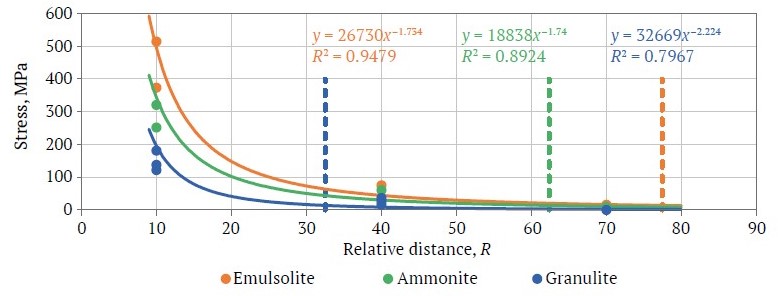
Fig. 4. Graph of stress as a function of distance [compiled by the authors]
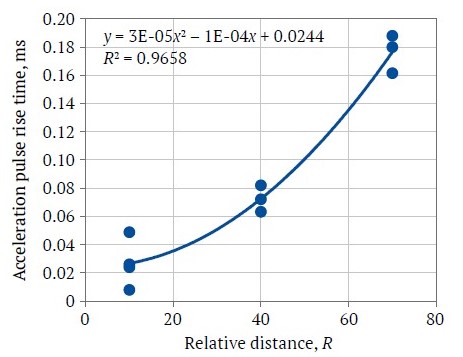
Fig. 5. Graph of acceleration pulse rise time as a function of distance [compiled by the authors]

Fig. 6. Sample volumetric model [compiled by the authors]
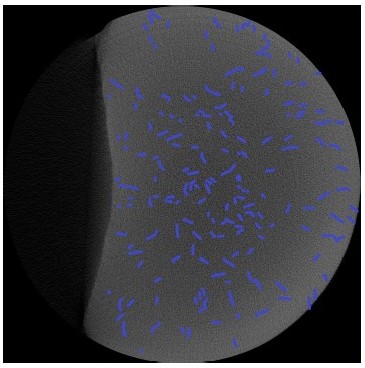
Fig. 7. Microfractures in a sample recovered after a blast at a relative distance of 40R (marked in blue) [compiled by the authors]

Fig. 8. Graph of the number of fractures in the rock as a function of stress [compiled by the authors]
Based on the data obtained, we plotted the density of microfractures caused by the blast as a function of detonation velocity in limestone rock for various relative distances (Figs. 9–11).

Fig. 9. Graph of the number of fractures as a function of detonation velocity at 10R [compiled by the authors]
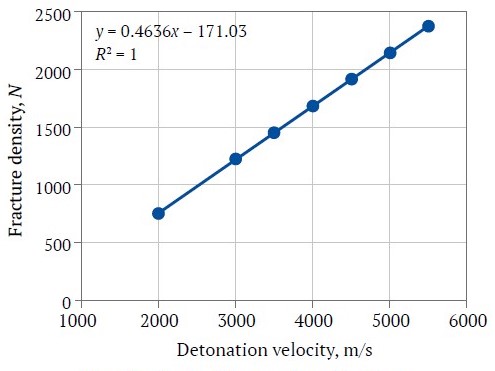
Fig. 10. Graph of the number of fractures as a function of detonation velocity at 40R [compiled by the authors]
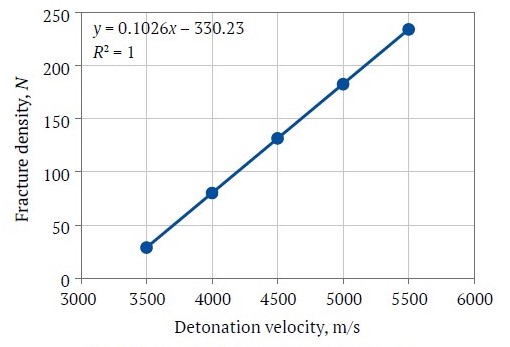
Fig. 11. Graph of the number of fractures as a function of detonation velocity at 70R [compiled by the authors]
4. Discussion
The obtained dependences are presented based on the parameters of blasts of Ammonite No. 6ZhV, Granulite RP and Emulsolite A-20 for limestone type rock with uniaxial compressive strength of 95 MPa. The different types of explosives with detonation velocities differing by at least 20% were used to allow an objective comparison of the results obtained.
The dependence of stresses in the rock caused by a blast on the relative distance for each type of explosives has the form of a power function that agrees with the data obtained earlier by other authors. The boundary of the prefracture zone in case of the blast of Emulsolite is at 77 radii of the charge from the blast hole and decreases to 33 radii for the blast of Granulite. This confirms the fact of the influence of an explosive detonation velocity on the size of prefracture zones. Beyond these boundaries, no blast-induced microfracturing is observed, as evidenced by the laboratory study on determining microfracture densities at different distances. This allows qualitative determination of prefracture in the limestone rock mass, but most of the study is devoted to quantifying the density of microfractures within the rupture and prefracture zones.
At short distances (10 charge radii), the functions of the dependence of stresses and fracture density on the velocity of explosive detonation have an exponential form, while at medium and long distances (40 and 70 radii), the dependence is linear. This may indicate that the velocity of explosive detonation has the greatest effect on rock prefracture predominantly at short distances. At the same time, the stress pulse rise time increases with increasing the distance. A high-amplitude stress pulse of short duration favors over-crushing of the rock at close distances, but with increasing distance from the blast the stress wave flattens out, leading to better crushing in terms of building stone extraction.
Determination of a quantitative indicator of rock microfracturing is necessary to calculate the degree of wave prefracture of both the whole rock mass and individual pieces after a blast. Undoubtedly, the accumulation of microdefects is stochastic in nature, but an increase in the density of microfractures in the entire volume of the samples was established. The obtained dependence of the microfracture density on the blast-induced stresses arising in a rock has a linear form. In [47-50], it was determined that the magnitude of blast stresses affects the degree of structural weakening of the fragment under consideration that is explained by an increase in fracture density. But in the above studies the authors did not consider quantitative indicators of fracturing, and thus the results of the present study are an addition to the previous studies findings.
Natural microfracturing also affects the strength properties of a rock [51], but in this paper, wave rock prefracture by blasting was considered. The density of natural microfractures was considered as relative zero because the existing microdefects in the rock before a blast affect the stress wave parameters in the rock, and these parameters were actually measured.
Conclusion
When mining hard rock for crushed stone, blast-induced microfracturing has an adverse impact on the quality of the final product.
The results of the experimental studies to determine the qualitative and quantitative parameters of rock prefracture during blast are presented. For instance, when the velocity of explosive detonation increases from 2 to 5.2 km/s, the prefracture zone increases from 33 to 77 charge radii. The dependence of the number of microdefects (microfractures) generated by a blast on the velocity of explosive detonation takes the form of an exponent for the near zone and is linear for distances far from the blast. According to the data of the experiments conducted at short distances (10R), the density of induced microfracturing N is within ≈5 thousand pcs/cm3, and with increasing detonation velocity it increases to ≈13.8 thousand pcs/cm3. At medium (40R) and long (70R) distances, N increases from ≈750 to ≈2400 pcs/cm3 and from 0 to ≈200 pcs/cm3, respectively.
It was established that the greatest influence on the shape and duration of the blast pulse is exerted by the velocity of explosive detonation. As the detonation velocity decreases, the peak pressure of the head part of the pulse decreases, and the duration of its rise increases, while a low-amplitude pulse of long duration contributes to better crushing of a rock mass with the least effect of prefracture.
Using explosives with a reduced detonation velocity allows reducing the “surplus” impact on a rock mass and thus reducing the intensity of prefracture in the zone of controlled crushing during a blast. This is because the individual pieces will be weakened to a lesser extent after a blast and as a result, the yield of undersize when crushing rock into crushed stone will be reduced.
Further consideration of other ways of influencing the degree of structural weakening of a rock within the rupture zone is planned.
References
1. Akhtyamov V. F., Khafizova E. N. Influence of technological non-metallic production wastes on heavy weight concrete properties. The Russian Automobile and Highway Industry Journal. 2018;15(2):261–268. (In Russ.) https://doi.org/10.26518/2071-7296-2018-2-261-268
2. Khafizova E. N., Akhtyamov V. F., Panchenko I. F., Panchenko D. A. Micro-fine component of stone screening dust in heavy weight cement concrete. Innovation & Investment. 2019;(9):261–266. (In Russ.) URL: https://www.innovazia.ru/upload/iblock/398/gxovlpzi12czrbffn0jydgt9ks8se85k/%E2%84%969%202019.pdf
3. Samukov A. D. Complex recycling of crushed aggregates waste. Ecology and Industry of Russia. 2019;23(7):15–19. (In Russ.) https://doi.org/10.18412/1816-0395-2019-7-15-19
4. Ding X., Ao Z., Li X. et al. The mechanism of plugging open-pit mine cannon holes and the modification of plugging materials. Sustainability. 2023;15(5):4257. https://doi.org/10.3390/su15054257
5. Moldovan D. V., Chernobay V. I., Yastrebova K. N. The influence of composite material in the stemming design on its operability. Mining Informational and Analytical Bulletin. 2023;(9–1):110–121. (In Russ.) https://doi.org/10.25018/0236_1493_2023_91_0_110
6. Kakharov Z. V., Islomov A. S. Concretes with aggregates from secondary concrete crushing products. Vestnik Nauki. 2023;3(5):820–825. (In Russ.)
7. Kornev A. V., Spitsyn A. A., Korshunov G. I., Bazhenova V. A. Preventing dust explosions in coal mines: Methods and current trends. Mining Informational and Analytical Bulletin. 2023;(3):133–149. https://doi.org/10.25018/0236_1493_2023_3_0_133
8. Shamaev M. K., Toshtemirov U. T. Extraction of crushed stone and requirements for their quality. Analytical Journal of Education and Development. 2022;2(10):131–137. (In Russ.)
9. Ganina A. S., Studenok G. A. Disposal of waste sand from crushing undersizes (fines) in the production of crushed stone. In: Proceedings of the International Scientific and Practical Conference “Ural Mining School – for Regions”. Ekaterinburg, April 11, 2022. Ekaterinburg: Ural State Mining University Publ.; 2022. Pp. 390–391. (In Russ.)
10. Korshunov G. I., Karimov A. M., Magamedov G. S., Tyulkin S. A. Reduction of respirable dust-induced impact on open pit mine personnel in large-scale blasting. Mining Informational and Analytical Bulletin. 2023;(7):132–144. https://doi.org/10.25018/0236_1493_2023_7_0_132
11. Kameneva E. E., Aminov V. N., Shchukin P. O. Definition of the problem of development and scientific substantiation of technologies for disintegration of overburden and host rocks of different genetic types to obtain building crushed stone. In: Findings of Research on the Processes of Disintegration of Strong Rocks in Order to Reduce Energy Consumption and Produce Additional Products in the Processing and Beneficiation of Ores and Technogenic Raw Materials. Collection of scientific papers. Petrozavodsk: VERSO LTD Publ.; 2016. Pp. 3–5. (In Russ.)
12. Tan N., Yang R., Tan Z. Influence of complicated faults on the differentiation and accumulation of in-situ stress in deep rock mass. International Journal of Minerals, Metallurgy and Materials. 2023;30(5):791–801. https://doi.org/10.1007/s12613-022-2528-y
13. Kovalevich S., Zyryanov I., Chernobay V. Experience of drilling-and-blasting in diamond fields in Yakutia. Journal of Mining Science. 2023;58:953–965. https://doi.org/10.1134/S1062739122060102
14. Kochanov A. N. Study of parameters of rock mass prefracture zones as a basis for the improvement of blasting technology. Mining Informational and Analytical Bulletin. 1996;(5):49–52. (In Russ.)
15. German V. I. Rock failure prediction in mines by seismic monitoring data. Journal of Mining Sciences. 2014;(2):99–109. (In Russ.)
16. Moldovan D. V., Chernobay V. I., Sokolov S. T., Bazhenova A. V. Design concepts for explosion products locking in chamber. Mining Informational and Analytical Bulletin. 2022;(6–2):5–17. (In Russ.) https://doi.org/10.25018/0236_1493_2022_62_0_5
17. Gospodarikov A. P., Trofimov A. V., Kirkin A. P. Evaluation of deformation characteristics of brittle rocks beyond the limit of strength in the mode of uniaxial servohydraulic loading. Journal of Mining Institute. 2022;256:539–548. https://doi.org/10.31897/PMI.2022.87
18. Kochanov A. N., Odintsev V. N. Teoretical estimation of microfractured area radius after camouflet explosion. Explosion Technology. 2015;(113/70):41–54. (In Russ.)
19. Menzhulin M. G., Shishov A. N., Paramonov G. P., Uvarov A. N. Kinetics of accumulation of induced fracturing in granite under the action of blast loads. Mining Informational and Analytical Bulletin. 1999;(1):143–146. (In Russ.)
20. Korshunov V. A., Pavlovich A. A., Bazhukov A. A. Evaluation of the shear strength of rocks by cracks based on the results of testing samples with spherical indentors. Journal of Mining Institute. 2023;262:606–618. https://doi.org/10.31897/PMI.2023.16
21. Wei M., Dai F., Liu Y., Jiang R. A fracture model for assessing tensile mode crack growth resistance of rocks. Journal of Rock Mechanics and Geotechnical Engineering. 2023;15(2):395–411. https://doi.org/10.1016/j.jrmge.2022.03.001
22. Alenichev I. A., Rakhmanov R. A. Empirical regularities investigation of rock mass discharge by explosion on the free surface of a pit bench. Journal of Mining Institute. 2021;249:334–341. https://doi.org/10.31897/PMI.2021.3.2
23. Kabetenov T., Yusupov Kh. A., Rustemov S. T. Rational parameters of blasting, considering action time of explosion-generated pulse. Journal of Mining Sciences. 2015;(2):75–81. (In Russ.)
24. Borovikov V. A., Andreev A. A., Efremovtsev N. N. Features of detonation of granulites including low-density polystyrene-containing compositions. Mining Informational and Analytical Bulletin. 2007;(6–3):53–62. (In Russ.)
25. Vinogradov Y. I., Artemov V. A. Blasting charge diameter influence on the blasting efficiency. Journal of Mining Institute. 2012;198:170–173. (In Russ.)
26. Valkov V. A., Vinogradov K. P., Valkova E. O., Mustafin M. G., Creating highly informative rasters based on laser scanning and aerial photography data. Geodesy and Cartography. 2022;83(11):40–49. (In Russ.) https://doi.org/10.22389/0016-7126-2022-989-11-40-49
27. Dolzhikov V. V., Ryadinsky D. E., Yakovlev A. A. Influence of deceleration intervals on the amplitudes of stress waves during the explosion of a system of borehole charges. Mining Informational and Analytical Bulletin. 2022;(6–2):18–32. https://doi.org/10.25018/0236_1493_2022_62_0_18
28. Artemov V. A., Vinogradova E. Yu., Vinogradov Yu. I., Gendler S. G. Influence of parity between depth of charge placing and weight of explosive on seismoblast waves parameters in near zone of explosion. Explosion Technology. 2009;(101/58):303–307. (In Russ.)
29. Menshikov P., Sinizin V., Shemenev V. Main detonation characteristics of explosives determination using the DATATRAP II DATA/VOD RECORDER measuring equipment. Problems of Subsoil Use. 2016;(4):112–120. (In Russ.) https://doi.org/10.18454/2313-1586.2016.04.112
30. Konurin A. I., Eremenko A. A., Filippov V. N. Assessment features for rock mass conditions under production blasting and geodynamic events. Mining Informational and Analytical Bulletin. 2017;(7):153–160. (In Russ.)
31. Ilyakhin S. V., Maslov I. Yu., Bragin P. A. Elementary theory of a measuring cable with a resistive method for measuring velocity of detonation of an explosive. News of the Ural State Mining University. 2019;(4):104– 108. (In Russ.) https://doi.org/10.21440/2307-2091-2019-4-104-108
32. Rodionov V. A., Karpov G. N., Leisle A. V. Methodological approach to the need to assess the explosion and fire hazard properties of sulfide-containing polymetallic ores. Mining Informational and Analytical Bulletin. 2022;(6–1):198–213. https://doi.org/10.25018/0236_1493_2022_61_0_198
33. Dong L., Zou W., Li X. et al. Collaborative localization method using analytical and iterative solutions for microseismic/acoustic emission sources in the rockmass structure for underground mining. Engineering Fracture Mechanics. 2019;210:95–112. https://doi.org/10.1016/j.engfracmech.2018.01.032
34. Potokin A. S., Pak A. K. Study of acoustic and electromagnetic emissions under uniaxial compression of hard rock samples. Naukosfera. 2020;(11–2):86–91. (In Russ.) https://doi.org/10.5281/zenodo.4309468
35. Rodríguez P., Celestino T. B. Application of acoustic emission monitoring and signal analysis to the qualitative and quantitative characterization of the fracturing process in rocks. Engineering Fracture Mechanics. 2019;210:54–69. https://doi.org/10.1016/j.engfracmech.2018.06.027
36. Bekher S. A., Popkov A. A. Temporal characteristics of the flow of acoustic emission signals in the development of cracks in glass under shock loading. Vestnik IzhGTU imeni M. T. Kalashnikova. 2019;22(1):62–71. (In Russ.) https://doi.org/10.22213/2413-1172-2019-1-62-71
37. Hu X., Su G., Chen G. et al. Experiment on rockburst process of borehole and its acoustic emission characteristics. Rock Mechanics and Rock Engineering. 2019;52:783–802. https://doi.org/10.1007/s00603-018-1613-z
38. Ghasemi S., Khamehchiyan M., Taheri A. et al. Crack evolution in damage stress thresholds in different minerals of granite rock. Rock Mechanics and Rock Engineering. 2020;53:1163–1178. https://doi.org/10.1007/s00603-019-01964-9
39. Du K., Li X., Tao M., Wang Sh. Experimental study on acoustic emission (AE) characteristics and crack classification during rock fracture in several basic lab tests. International Journal of Rock Mechanics and Mining Sciences. 2020;133:104411. https://doi.org/10.1016/j.ijrmms.2020.104411
40. Shkuratnik V. L., Novikov E. A., Oshkin R. O. Experimental analysis of thermally stimulated acoustic emission in various-genotype rock specimens under uniaxial compression. Journal of Mining Sciences. 2014;(2):69–76. (In Russ.)
41. Oparin V. N., Usol’tseva O. M., Semenov V. N., Tsoi P. A. Evolution of stress–strain state in structured rock specimens under uniaxial loading. Journal of Mining Sciences. 2013;(5):3–19. (In Russ.)
42. Viktorov S. D., Kochanov A. N., Odintsev V. N. Pre-destruction of rocks as a stage of fracture process under quasi-static and dynamic loading. Journal of Mining Institute. 2007;171:153–157. (In Russ.)
43. Ponomarev A. A., Zavatsky M. D. Methods of application of computer microtomography in geology. Oil and Gas Studies. 2015;(3):31–35. (In Russ.) https://doi.org/10.31660/0445-0108-2015-3-31-35
44. Koteleva N. I., Valnev V. V., Korolev N. A. Augmented reality as a means of metallurgical equipment servicing. Tsvetnye Metally. 2023;(4):14–23. https://doi.org/10.17580/tsm.2023.04.02
45. Vettegren V. I., Kuksenko V. S., Shcherbakov I. P. The mechanism and dynamics of rock fracture upon mechanical impact and electric discharge. Izvestiya, Physics of the Solid Earth. 2016;52(5):754–769. https:// doi.org/10.1134/S106935131604011X (Orig. ver.: Vettegren V. I., Kuksenko V. S., Shcherbakov I. P. The mechanism and dynamics of rock fracture upon mechanical impact and electric discharge. Fizika Zemli. 2016;(5):134–149. https://doi.org/10.7868/S0002333716040116)
46. Yashunsky Yu. V., Novikov I. A., Shkurskii B. B. et al. Authigenic potassium feldspar from upper carboniferous limestone of Moscow Region. Bulletin of Moscow Society of Naturalists. Geological Series. 2016;91(6):49–61. (In Russ.)
47. Kochanov A. N., Odintsev V. N. Wave pre-destruction of solid rocks under blasting. Journal of Mining Sciences. 2016;(6):38–48. (In Russ.)
48. Kochanov A. N. Some research results in the field of blasting rock rupture. In: Problems and Prospects of Integrated Development and Conservation of Earth’s Subsoil. Collection of articles from the 5th Conference of the International Scientific School of K. N. Trubetskoy, Academician of the Russian Academy of Sciences. Moscow, November 14–18, 2022. Moscow: IPCON RAS; 2022. Pp. 112–115. (In Russ.)
49. Shevkun E. B., Leshchinskiy A. V., Lysak Yu. A., Plotnikov A. Yu. Long-period delay loosening blasting in open pit mines. Mining Informational and Analytical Bulletin. 2020;(10):29–41. (In Russ.) https://doi.rg/10.25018/0236-1493-2020-10-0-29-41
50. Fan X., Jiang X., Liu Y. et al. Local stress distribution and evolution surrounding flaw and opening within rock block under uniaxial compression. Theoretical and Applied Fracture Mechanics. 2021;112:102914. https://doi.org/10.1016/j.tafmec.2021.102914
51. Isheisky V. A., Ryadinskii D. E., Magomedov G. S. Increasing the quality of fragmentation of blasting rock mass ased on accounting for structural features of massif in the blast design. Mining Informational and Analytical Bulletin. 2023;(9–1):79–95. (In Russ.) https://doi.org/10.25018/0236_1493_2023_91_0_79
About the Authors
S. V. KhokhlovRussian Federation
Sergei V. Khokhlov – Cand. Sci. (Eng.), Associate Professor, Department of Explosive Engineering
Scopus ID 57199258554, ResearcherID AAG-5849-2019
Saint Petersburg
Yu. I. Vinogradov
Russian Federation
Juriy I. Vinogradov – Cand. Sci. (Eng.), Senior Researcher, Associate Professor, Department of Explosive Engineering
Scopus ID 57208625767, ResearcherID AAG-5997-2019
Saint Petersburg
V. A. Makkoev
Russian Federation
Viacheslav A. Makkoev – PhD-Student (Eng.), Department of Explosive Engineering
Scopus 57428865400
Saint Petersburg
Z. A. Abiyev
Russian Federation
Zaur A. Abiev – Assistant (Eng.), Department of Explosive Engineering
Scopus ID 57206657220
Saint Petersburg
Review
For citations:
Khokhlov S.V., Vinogradov Yu.I., Makkoev V.A., Abiyev Z.A. Effect of explosive detonation velocity on the degree of rock pre-fracturing during blasting. Mining Science and Technology (Russia). 2024;9(2):85-96. https://doi.org/10.17073/2500-0632-2023-11-177




































